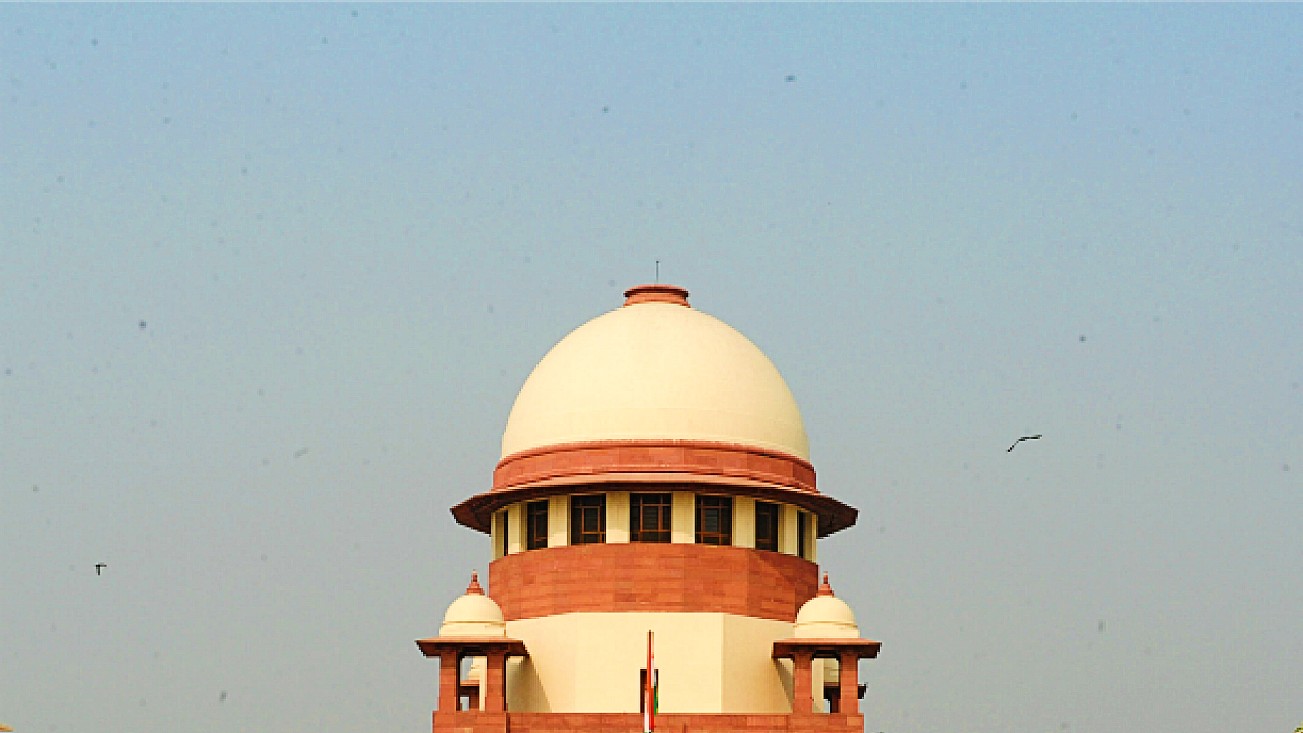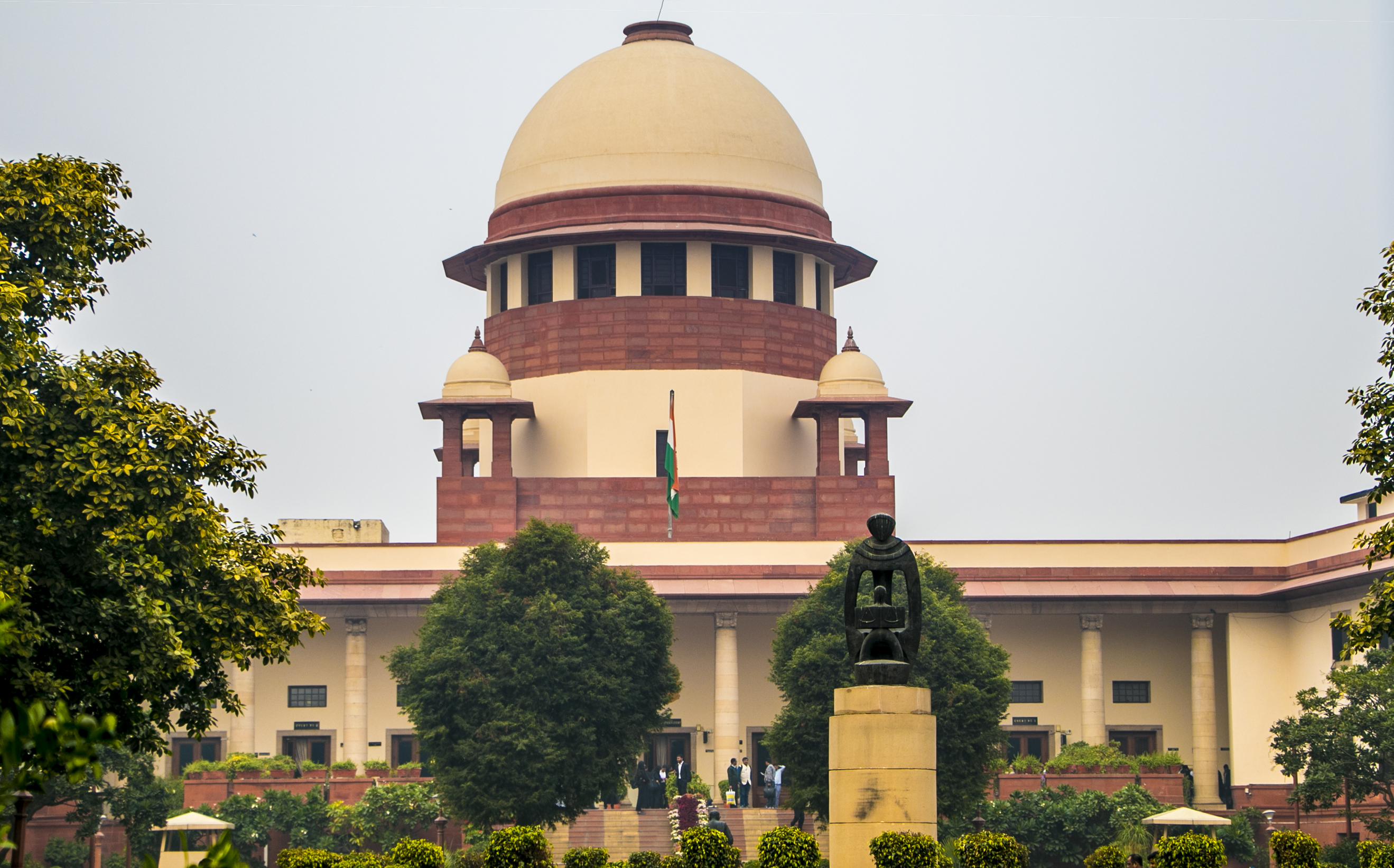In Civil Appeal Nos. 23-24 of 2024-SC- Conduct of HC in frequently summoning govt. officials to exert pressure on govt., under threat of contempt, is impermissible: SC frames SOP addressing the appearance of Government Officials before Courts
Chief Justice D.Y. Chandrachud, Justices J.B. Pardiwala & Manoj Misra [03-01-2024]

Tulip Kanth
New Delhi, January 8, 2023: While setting aside the Orders of the Allahabad High Court whereby criminal contempt proceedings were initiated against various officials of the Government of Uttar Pradesh, the Supreme Court has issued a Standard Operating Procedure on Personal Appearance of Government Officials in Court Proceedings.
The 3-Judge Bench of Chief Justice D.Y. Chandrachud, Justice J.B. Pardiwala and Justice Manoj Misra said, “Constantly summoning officials of the government instead of relying on the law officers representing the government, runs contrary to the scheme envisaged by the Constitution.”
The Apex Court was considering the appeals which arose from two orders of the Division Bench of the High Court of Judicature at Allahabad dated April 4, 2023 and April 19, 2023 (Impugned Orders). The Impugned Orders had given rise to significant questions about the separation of powers, the exercise of criminal contempt jurisdiction, and the practice of frequently summoning government officials to court.
By its order dated April 4, 2023 (First Impugned Order), the High Court directed the Government of Uttar Pradesh to notify rules proposed by the Chief Justice of the High Court pertaining to Domestic Help to Former Chief Justices and Former Judges of the Allahabad High Court by the next date of hearing. The High Court further directed certain officials of the Government of Uttar Pradesh to be present before the court on the next date if the order was not complied with.
The State of Uttar Pradesh moved an application before the High Court to seek a recall of this Order highlighting legal obstacles in complying with the directions of the High Court. By its order dated April 19, 2023 (Second Impugned Order), the High Court held that the recall application was contemptuous and initiated criminal contempt proceedings against various officials of the Government of Uttar Pradesh. The officials present in the court, including the Secretary (Finance) and Special Secretary (Finance) were taken into custody and bailable warrants were issued against the Chief Secretary and the Additional Chief Secretary (Finance).
At the outset, referring to Article 229(2) of the Constitution which pertains only to the service conditions of officers and servants of the High Courts and does not include Judges of the High Court (both sitting and retired judges), the Bench held, “The Chief Justice does not have the power, under Article 229, to make rules pertaining to the post-retiral benefits payable to former Chief Justices and judges of the High Court. Therefore, the Rules proposed by the Chief Justice, in the present case, do not fall within the competence of the Chief Justice under Article 229. The reliance placed on the provision in the preamble to the Rules is misplaced.”
It was also observed that the High Court’s conduct on the judicial side in the Impugned Orders was also erroneous. “Therefore, the High Court acted beyond its jurisdiction under Article 226 by frequently summoning officers to expedite the consideration of the Rules and issuing directions to notify the Rules by a fixed date, under the threat of criminal contempt”, the Bench stated.
In the second Impugned Order, the High Court held that the actions of the officials of the Government of Uttar Pradesh constituted criminal contempt as there was no valid reason to not comply with the earlier Order.
According to the Bench, even if the High Court’s assessment was assumed to be correct, non-compliance with the First Impugned Order could at most, constitute civil contempt. The High Court failed to give any reasoning for how the purported non-compliance with the First Impugned Order was of the nature to meet the standard of criminal contempt. The High Court acted in haste by invoking criminal contempt against the officials of the Government of Uttar Pradesh and directing for them to be taken into custody.
“In our considered opinion, however, even the standard for civil contempt was not met in the facts of the present case”, it said while also noticing that the power of the High Courts to initiate contempt proceedings cannot be used to obstruct parties or their counsel from availing legal remedies.
In the present case, the State of Uttar Pradesh was availing its legitimate remedy of filing a recall application and the same was filed in a bona fide manner. Not only had the Finance Department raised its concerns regarding the competence of the Chief Justice before the High Court but its previous conduct, including file notings of the department and letters to the Central Government, indicated that this objection had been raised by them in the past. The legal position taken by the Government in the recall application was evidently based on their desire to avail their legal remedy and not to willfully disobey the First Impugned Order.
The Bench was of the view that the actions of the government of Uttar Pradesh did not constitute even civil contempt let alone criminal contempt. The circumstances most definitely did not warrant the High Court acting in haste, by directing that the officials present before the court be taken into custody. As per the Bench, the invocation of criminal contempt and taking the government officials into custody was not warranted.
The Top Court also highlighted the fact that the appearance of government officials before courts must not be reduced to a routine measure in cases where the government is a party and can only be resorted to in limited circumstances. The use of the power to summon the presence of government officials must not be used as a tool to pressurize the government, particularly, under the threat of contempt.
Thus, setting aside the impugned orders, the Bench framed the SOP on Personal Appearance of Government Officials in Court Proceedings. The same is set out below:
This Standard Operating Procedure is applicable to all court proceedings involving the government in cases before the Supreme Court, High Courts and all other courts acting under their respective appellate and/or original jurisdiction or proceedings related to contempt of court.
1. Personal presence pending adjudication of a dispute
1.1 Based on the nature of the evidence taken on record, proceedings may broadly be classified into three categories:
a. Evidence-based Adjudication: These proceedings involve evidence such as documents or oral statements. In these proceedings, a government official may be required to be physically present for testimony or to present relevant documents. Rules of procedure, such as the Code of Civil Procedure, 1908, or Criminal Procedure Code 1973, govern these proceedings.
b. Summary Proceedings: These proceedings, often called summary proceedings, rely on affidavits, documents, or reports. They are typically governed by the Rules of the Court set by the High Court and principles of Natural Justice.
c. Non-adversarial Proceedings: While hearing non- adversarial proceedings, the court may require the presence of government officials to understand a complex policy or technical matter that the law officers of the government may not be able to address.
1.2 Other than in cases falling under para 1.1(a) above, if the issues can be addressed through affidavits and other documents, physical presence may not be necessary and should not be directed as a routine measure.
1.3 The presence of a government official may be directed, inter alia, in cases where the court is prima facie satisfied that specific information is not being provided or is intentionally withheld, or if the correct position is being suppressed or misrepresented.
1.4 The court should not direct the presence of an official solely because the officials stance in the affidavit differs from the courts view. In such cases, if the matter can be resolved based on existing records, it should be decided on merits accordingly.
2. Procedure prior to directing personal presence
2.1 In exceptional cases wherein the in-person appearance of a government official is called for by the court, the court should allow as a first option, the officer to appear before it through video conferencing.
2.2 The Invitation Link for VC appearance and viewing, as the case may be, must be sent by the Registry of the court to the given mobile no(s)/e-mail id(s) by SMS/email/WhatsApp of the concerned official at least one day before the scheduled hearing
2.3 When the personal presence of an official is directed, reasons should be recorded as to why such presence is required.
2.4 Due notice for in-person appearance, giving sufficient time for such appearance, must be served in advance to the official. This would enable the official to come prepared and render due assistance to the court for proper adjudication of the matter for which they have been summoned.
3. Procedure during the personal presence of government officials: In instances where the court directs the personal presence of an official or a party, the following procedures are recommended:
3.1 Scheduled Time Slot: The court should, to the extent possible, designate a specific time slot for addressing matters where the personal presence of an official or a party is mandated.
3.2 The conduct of officials: Government officials participating in the proceedings need not stand throughout the hearing. Standing should be required only when the official is responding to or making statements in court.
3.3 During the course of proceedings, oral remarks with the potential to humiliate the official should be avoided.
3.4 The court must refrain from making comments on the physical appearance, educational background, or social standing of the official appearing before it.
3.5 Courts must cultivate an environment of respect and professionalism. Comments on the dress of the official appearing before the court should be avoided unless there is a violation of the specified dress code applicable to their office.
4. Time Period for compliance with judicial orders by the Government
4.1 Ensuring compliance with judicial orders involving intricate policy matters necessitates navigating various levels of decision- making by the Government. The court must consider these complexities before establishing specific timelines for compliance with its orders. The court should acknowledge and accommodate a reasonable timeframe, as per the specifics of the case.
4.2 If an order has already been passed, and the government seeks a revision of the specified timeframe, the court may entertain such requests and permit a revised, reasonable timeframe for the compliance of judicial orders, allowing for a hearing to consider modifications.
5. Personal presence for enforcement/contempt of court proceedings
5.1 The court should exercise caution and restraint when initiating contempt proceedings, ensuring a judicious and fair process.
5.2 Preliminary Determination of Contempt: In a proceeding instituted for contempt by wilful disobedience of its order, the court should ordinarily issue a notice to the alleged contemnor, seeking an explanation for their actions, instead of immediately directing personal presence.
5.3 Notice and Subsequent Actions: Following the issuance of the notice, the court should carefully consider the response from the alleged contemnor. Based on their response or absence thereof, it should decide on the appropriate course of action. Depending on the severity of the allegation, the court may direct the personal presence of the contemnor.
5.4 Procedure when personal presence is directed: In cases requiring the physical presence of a government official, it should provide advance notice for an in-person appearance, allowing ample time for preparation. However, the court should allow the officer as a first option, to appear before it through video conferencing.
5.5 Addressing Non-Compliance: The court should evaluate instances of non-compliance, taking into account procedural delays or technical reasons. If the original order lacks a specified compliance timeframe, it should consider granting an appropriate extension to facilitate compliance.
5.6 When the order specifies a compliance deadline and difficulties arise, the court should permit the contemnor to submit an application for an extension or stay before the issuing court or the relevant appellate/higher court.
Sign up for our weekly newsletter to stay up to date on our product, events featured blog, special offer and all of the exciting things that take place here at Legitquest.




Add a Comment